Abstract
Butylated hydroxytoluene (BHT) is a potent inactivator of the enveloped bacterial virus ø6 at concentrations as low as 3 × 10−5 M. The viral envelope is not removed by BHT treatment, in contrast to the effects of exposure to the detergent Triton X-100. BHT-treated viruses are morphologically indistinguishable from controls but are defective in their ability to attach to the host cell. Temperature at the time of exposure was found to be a crucial factor in the effectiveness of BHT against ø6. A precipitous drop in the degree of inactivation by 3 × 10−5 M BHT occurred when the temperature was lowered from 20 to 15 C. Calcium ions were found to potentiate the effect of BHT, particularly at lower temperatures where BHT alone was relatively ineffective. Barium and strontium, but not magnesium, were also effective in enhancing the activity of BHT. A structurally related molecule, butylated hydroxyanisole (BHA), was also found to inactivate ø6 virus, but higher concentrations were required than with BHT. Both BHT and BHA are commonly used as food additives, have apparent low toxicity to humans and other animals, and are potentially useful as antiviral agents.
Full text
PDF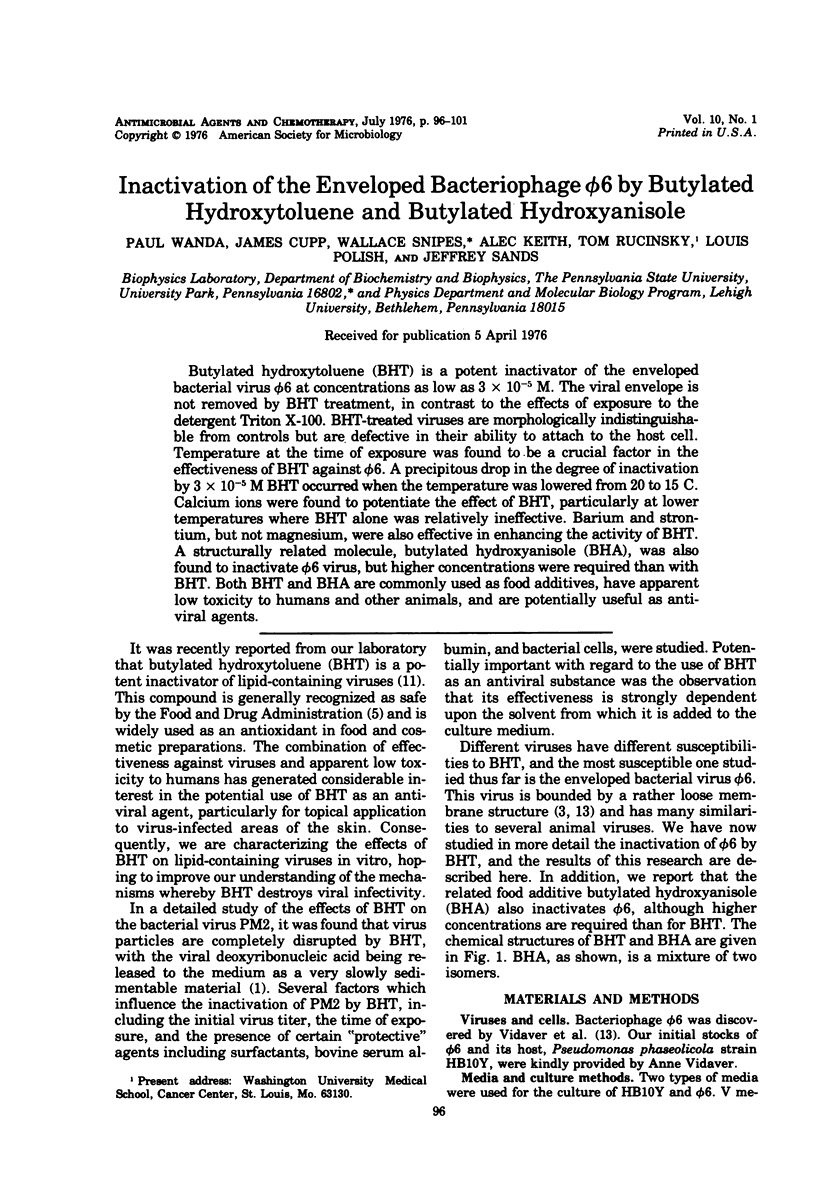
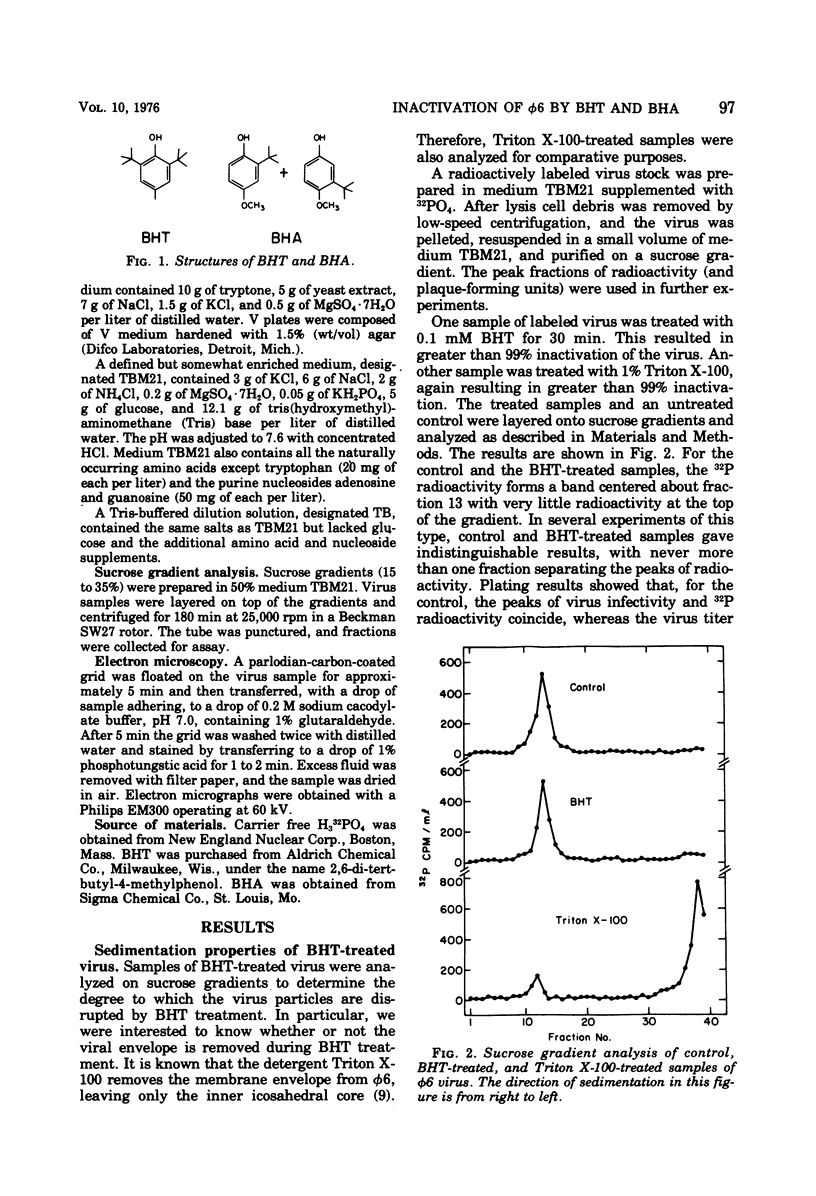
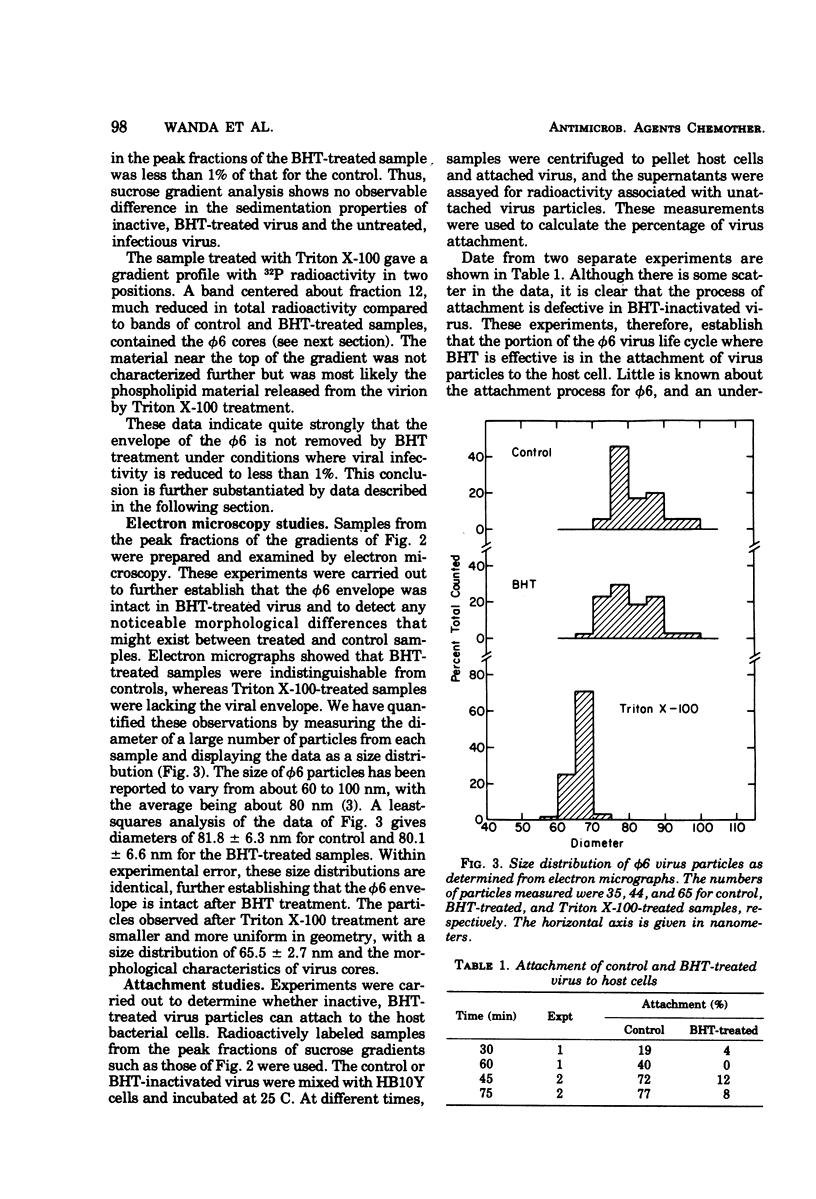
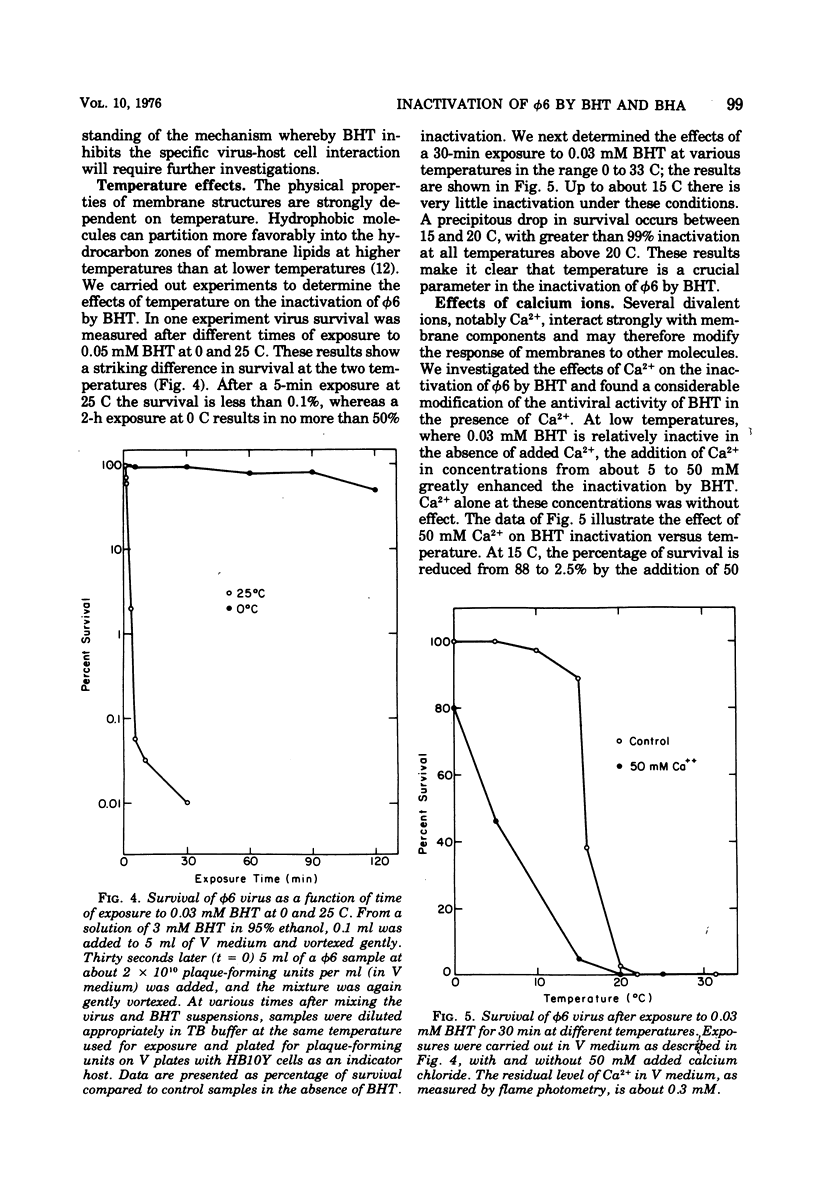
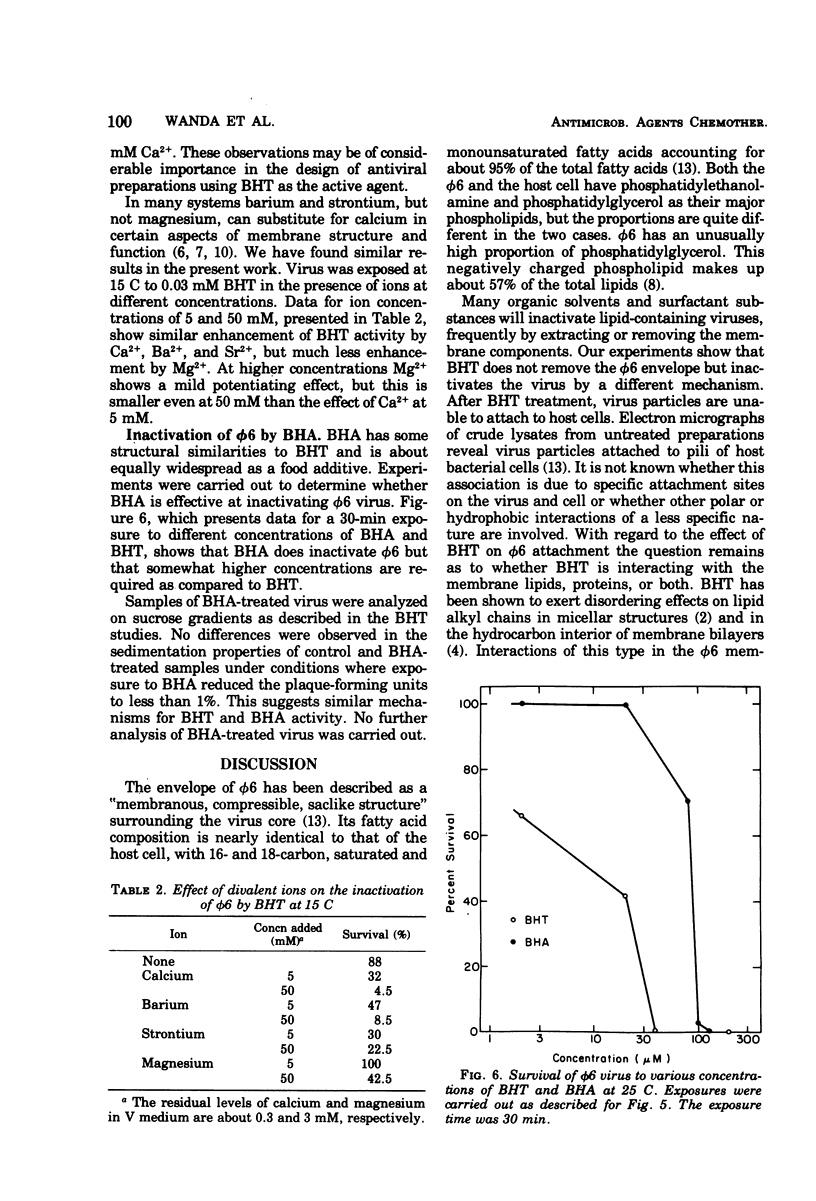
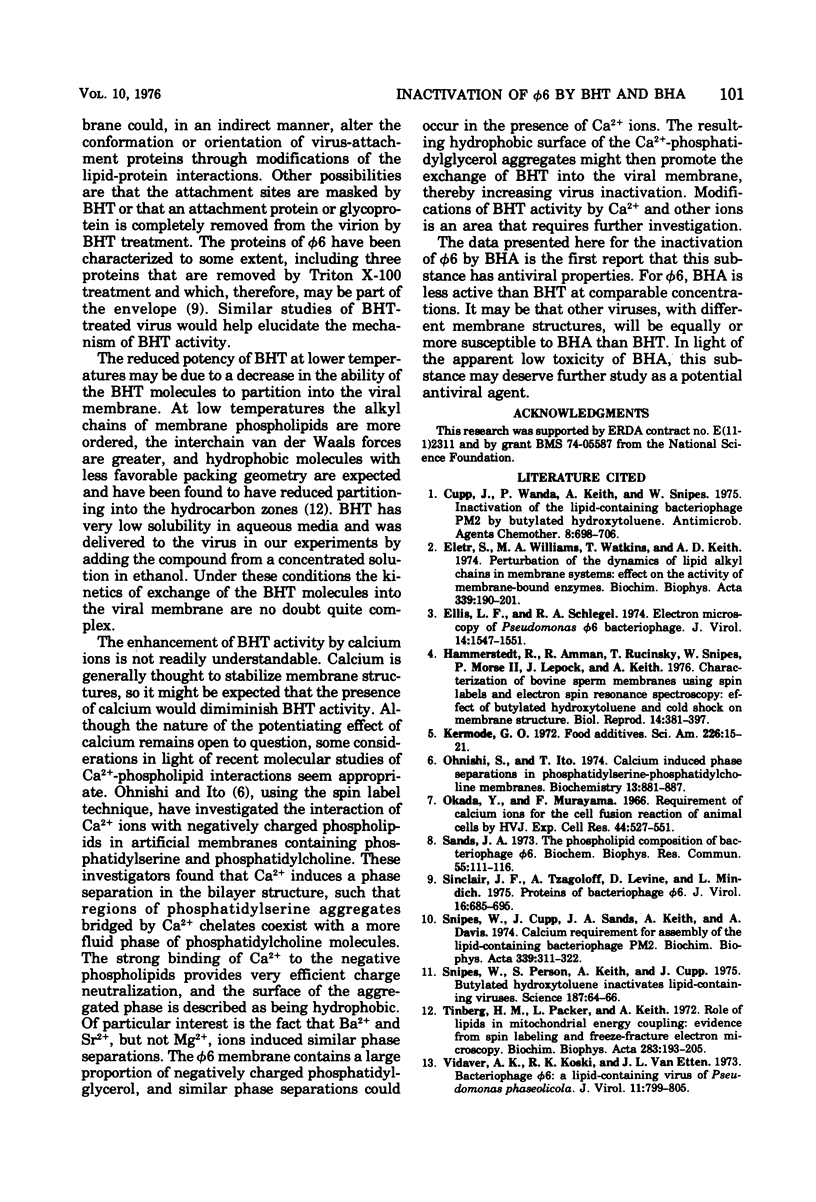
Selected References
These references are in PubMed. This may not be the complete list of references from this article.
- Cupp J., Wanda P., Keith A., Snipes W. Inactivation of the lipid-containing bacteriophage PM2 by butylate hydroxytoluene. Antimicrob Agents Chemother. 1975 Dec;8(6):698–706. doi: 10.1128/aac.8.6.698. [DOI] [PMC free article] [PubMed] [Google Scholar]
- Ellis L. F., Schlegel R. A. Electron microscopy of Pseudomonas phi 6 bacteriophage. J Virol. 1974 Dec;14(6):1547–1551. doi: 10.1128/jvi.14.6.1547-1551.1974. [DOI] [PMC free article] [PubMed] [Google Scholar]
- Hammerstedt R. H., Amann R. P., Rucinsky T., Morse P. D., Jr, Lepock J., Snipes W., Keith A. D. Use of spin labels and electron spin resonance spectroscopy to characterize membranes of bovine sperm: effect of butylated hydroxytoluene and cold shock. Biol Reprod. 1976 May;14(4):381–397. doi: 10.1095/biolreprod14.4.381. [DOI] [PubMed] [Google Scholar]
- Kermode G. O. Foood additives. Sci Am. 1972 Mar;226(3):15–21. doi: 10.1038/scientificamerican0372-15. [DOI] [PubMed] [Google Scholar]
- Okada Y., Murayama F. Requirement of calcium ions for the cell fusion reaction of animal cells by HVJ. Exp Cell Res. 1966 Nov-Dec;44(2):527–551. doi: 10.1016/0014-4827(66)90458-7. [DOI] [PubMed] [Google Scholar]
- Onishi S., Ito T. Calcium-induced phase separations in phosphatidylserine--phosphatidylcholine membranes. Biochemistry. 1974 Feb 26;13(5):881–887. doi: 10.1021/bi00702a008. [DOI] [PubMed] [Google Scholar]
- Sands J. A. The phospholipid composition of bacteriophage phi6. Biochem Biophys Res Commun. 1973 Nov 1;55(1):111–116. doi: 10.1016/s0006-291x(73)80066-x. [DOI] [PubMed] [Google Scholar]
- Sinclair J. F., Tzagoloff A., Levine D., Mindich L. Proteins of bacteriophage phi6. J Virol. 1975 Sep;16(3):685–695. doi: 10.1128/jvi.16.3.685-695.1975. [DOI] [PMC free article] [PubMed] [Google Scholar]
- Snipes W., Cupp J., Sands J. A., Keith A., Davis A. Calcium requirement for assemby of the lipid-containing bacteriophage PM2. Biochim Biophys Acta. 1974 Mar 29;339(3):311–322. doi: 10.1016/0005-2736(74)90158-8. [DOI] [PubMed] [Google Scholar]
- Snipes W., Person S., Keith A., Cupp J. Butylated hydroxytoluene inactivated lipid-containing viruses. Science. 1975 Apr 4;188(4183):64–66. doi: 10.1126/science.163494. [DOI] [PubMed] [Google Scholar]
- Tinberg H. M., Packer L., Keith A. D. Role of lipids in mitochondrial energy coupling: evidence from spin labeling and freeze-fracture electron microscopy. Biochim Biophys Acta. 1972 Nov 17;283(2):193–205. doi: 10.1016/0005-2728(72)90235-6. [DOI] [PubMed] [Google Scholar]
- Vidaver A. K., Koski R. K., Van Etten J. L. Bacteriophage phi6: a Lipid-Containing Virus of Pseudomonas phaseolicola. J Virol. 1973 May;11(5):799–805. doi: 10.1128/jvi.11.5.799-805.1973. [DOI] [PMC free article] [PubMed] [Google Scholar]


